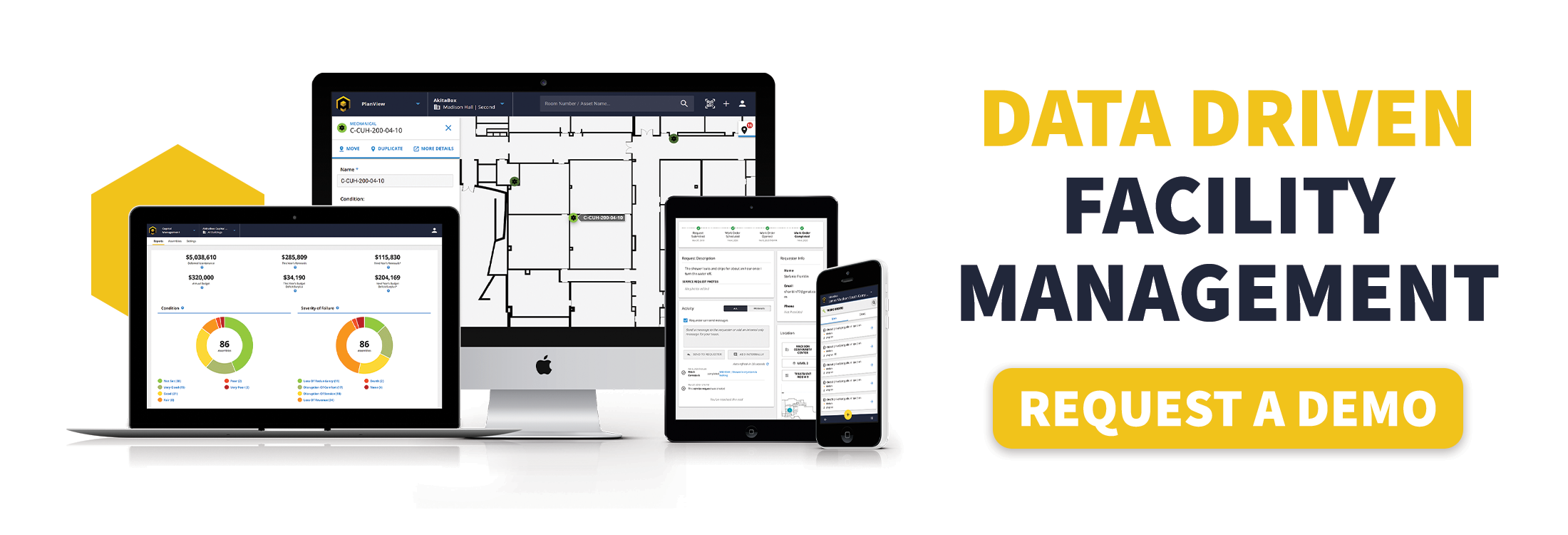How Construction Turnover and Facilities Management Can Work Together Better
The best time to input your building documentation into your facility management software is at construction turnover. But typically, the turnover data doesn’t come in a format that’s easy to migrate into your FM system.
You can change that. New technology tools are addressing this problem by streamlining the flow of information from construction to building operations and facility management.
The Current Way of Doing Construction Turnover is a Dead End
Your general contractor ensures you have all the required documentation at the end of your project – but after that, you’re on your own. It’s not turned over to you in a way that seamlessly melds with your existing facilities management systems and structure. Instead it’s a massive glut of information that may or may not be easy to navigate.
Your construction turnover documents often include items such as:
- As-built drawings/floor plans
- O&M manuals for major systems
- Asset information
- Material specifications
- Guarantees and warranties
- Any required inspection certificates and approvals

It usually comes in one of a few different formats, such as:
- Paper files in binders
- PDF, Word, and AutoCAD/Revit files on a thumb drive
- Database or Excel spreadsheet with links to attachments
- Static exe file with local folder structure
These all do the job of transferring your construction documents to you. But then what? You’re faced with a mountain of building information that’s:
- Not editable or maintainable
- Not tagged to or associated with any specific asset or space in your building
- Not able to automatically move into your existing facilities management software tool
Bringing Your Construction Turnover Documentation to Life
The data you receive at turnover is incredibly important for ongoing facilities management. It’s basically a huge owner’s manual for your entire building. The last thing you want is for all that information to sit around doing nothing for you.
Ask the general contractor for your next project how they typically deliver turnover documentation.
- Do they mark where every asset is located on your floor plans?
- Can you edit any of the information going forward or is it static?
- Can you associate additional information with each asset (such as YouTube how-to videos or updated owner’s manuals?)
- Do they create relationships between assets so you know what’s upstream and downstream from each asset?
- Can you update an asset’s condition over time?
- Can you track each asset all the way through its lifecycle?
- Is all the data stored in one place instead of scattered across multiple folders?
- Is the data accessible to everyone on your facilities and leadership teams?
Think receiving your turnover documentation like this is impossible? Well, it’s not!
Bridging the Gap Between Construction & Facilities Management

What if there was a tool that took all of your construction turnover documents, put them into a facilities management tool for you, and then continued to serve as a complete FM system for your building? That’s literally what AkitaBox is.
(Wait – don’t stop reading just because I mentioned a brand name. No high-pressure sales pitches here, I promise.)
AkitaBox’s four founders all worked in the construction industry. One day they realized something. There are so many really cool software tools construction teams can use to organize all of their data. But there was nothing to carry that organization through to the building owner. Turnover was notoriously manual, time-consuming, and without much operational value to the building operator.
So they set out to change that. A few years later, AkitaBox was born – a tool specially designed to transfer files from construction to operations in a meaningful way.
How does it work?
This is a bit of a simplification, but in essence, your general contractor would use AkitaBox to:
- Load your digital floor plans/as-built drawings
- Set the locations of each asset on the floor plans
- Associate the O&M manuals, warranties, spec sheets, manufacturer info, and any other relevant information to each asset or room
For example, say your new building has a long hallway with 20 fire extinguishers in it. Within AkitaBox, your contractor places a digital “pin” on your floor plan at the location of each extinguisher. Then, they’ll link data like the fire protection plan and other information to every extinguisher. When you click on one of those pins on the floor plan, all of that helpful data pops up.
This video goes into more detail about how this location-based asset mapping concept works.
You Deserve Better Turnover Documentation
With a tool like AkitaBox, your construction documents are searchable, associated with the correct locations and assets within your building, and easy to access from anywhere.
But you won’t get this sort of turnover experience unless you ask for it. Start planning the construction turnover at the very beginning of your next project. Request that your construction team use a tool like AkitaBox upfront and make your expectations around turnover clear from the get-go.
Interested in seeing AkitaBox in action? We’d love to show you around! Schedule a demo or chat with one or our team members today.
